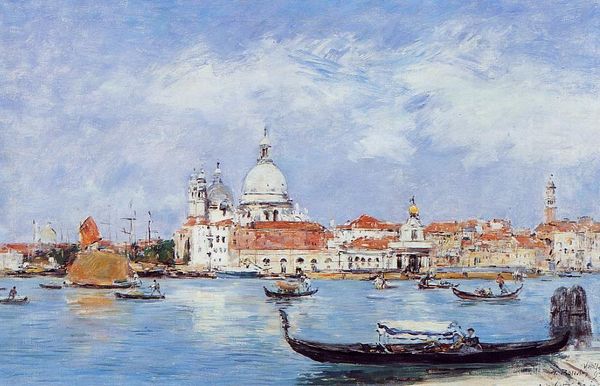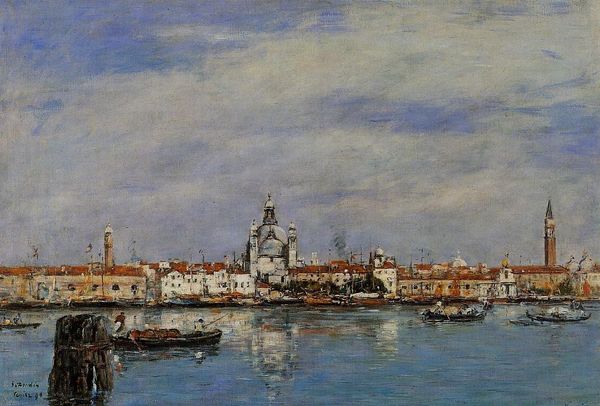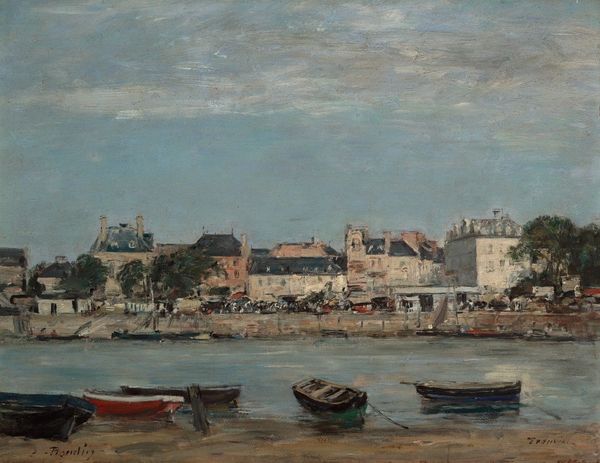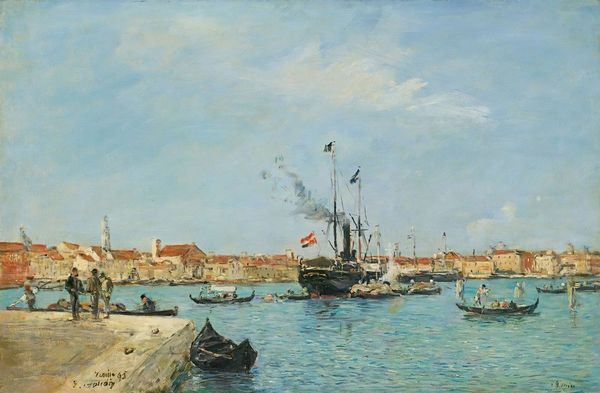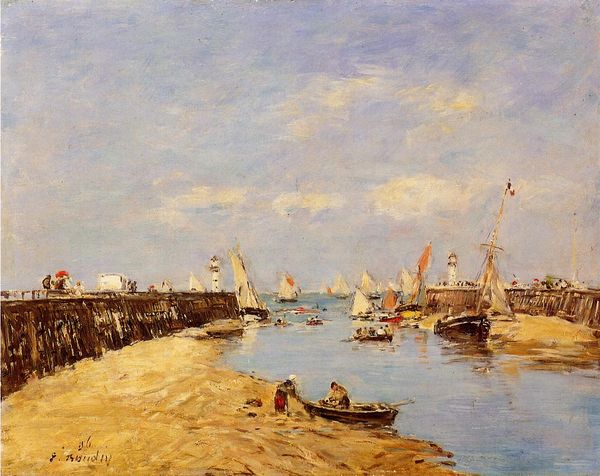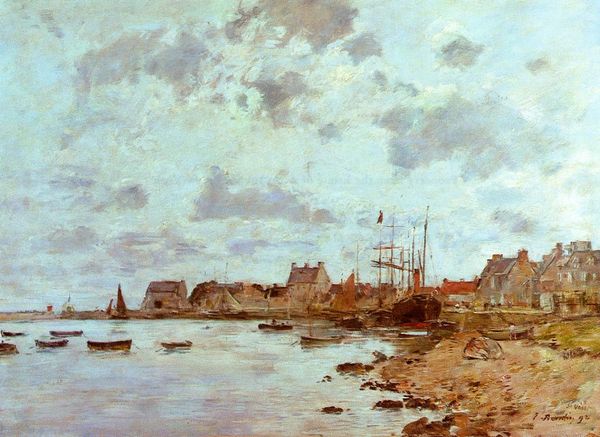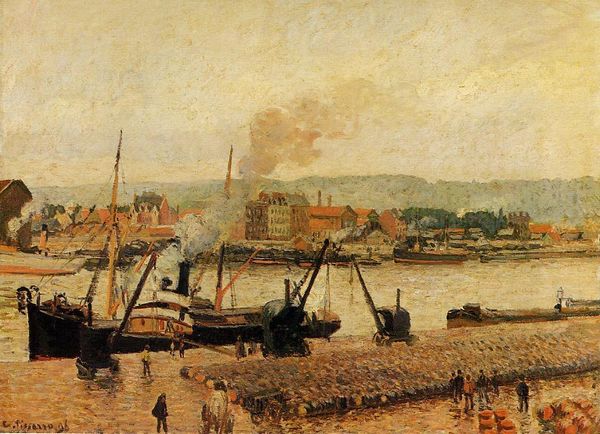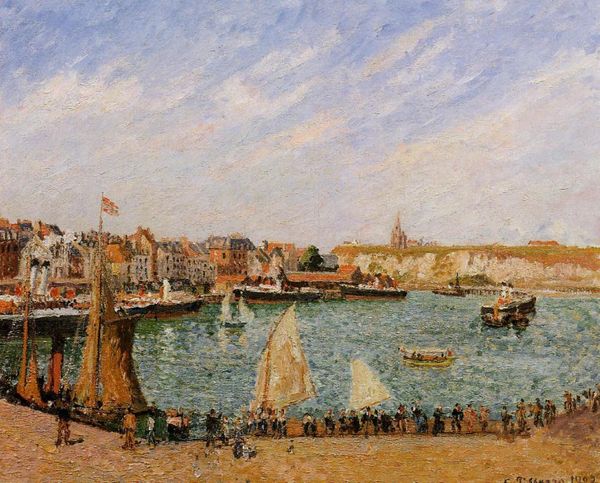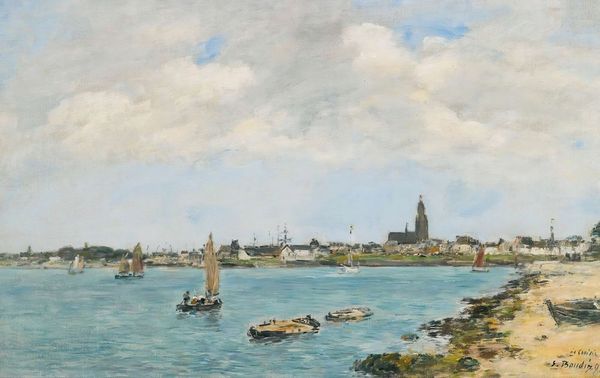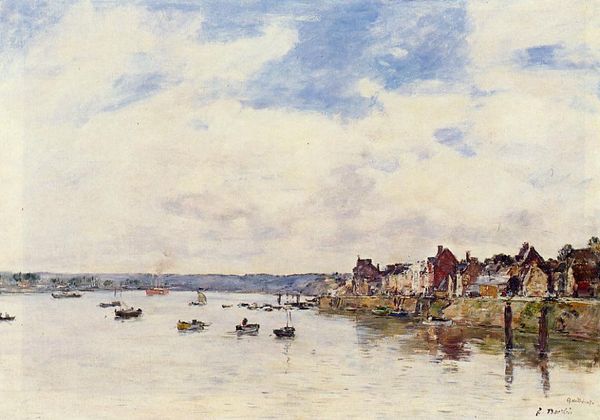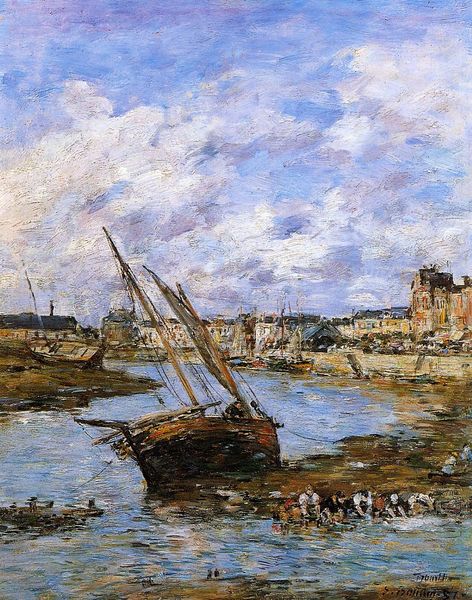
Copyright: Public domain
Curator: Standing before us is Eugène Boudin’s "Venice," created in 1895. This oil painting, made en plein air, offers a snapshot of the iconic city. Editor: My first impression is one of serenity—a peaceful blend of blue and creamy hues. The composition seems to capture the light reflecting off the water, evoking a sense of calm. Curator: It's compelling to consider the painting's socio-political context. Late 19th-century Venice was romanticized by wealthy tourists, arguably contributing to a form of cultural commodification. Boudin, while celebrated, was also participating in this representation. Editor: Absolutely. And the gondolas, they’re not just boats. They symbolize Venetian identity, reflecting centuries of maritime power and a very specific type of labor, evoking generations of gondoliers who navigated those waterways. The buildings too are iconic; each dome and spire speaks to the wealth and artistic ambition of its patron. Curator: Looking closer, the painting certainly depicts an idyllic scene. We need to acknowledge the layers of representation and how they relate to power, labor, and cultural identity within Venice at that historical moment. Did he, perhaps unconsciously, obscure any aspect of the very real class disparities? Editor: I think it can be read in multiple ways. The artist perhaps sought to capture the essence of the city’s beauty while acknowledging its role as a prominent global symbol. But these symbols risk simplification: for those outside elite society, that could mean that symbols become detached from their specific lived experience, representing an unattainable world for some, or perhaps a constant source of comparison. Curator: Thank you, I appreciate your attention to symbolism and what the gondolas can convey beyond their immediate functionality as vehicles. Editor: Similarly, if we follow the trajectory of visual representations over time, paintings such as this can perpetuate—or disrupt—the existing historical narrative for us today. What impact can images like these make on the evolution of cultural memory? Curator: An excellent point about cultural memory; how each artistic work contributes to a shared but possibly contested and always shifting story. Editor: It certainly prompts important questions regarding symbolism, cultural context, and the potential for complex historical representation within one canvas.
Comments
No comments
Be the first to comment and join the conversation on the ultimate creative platform.

